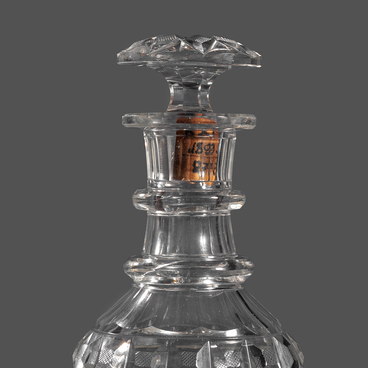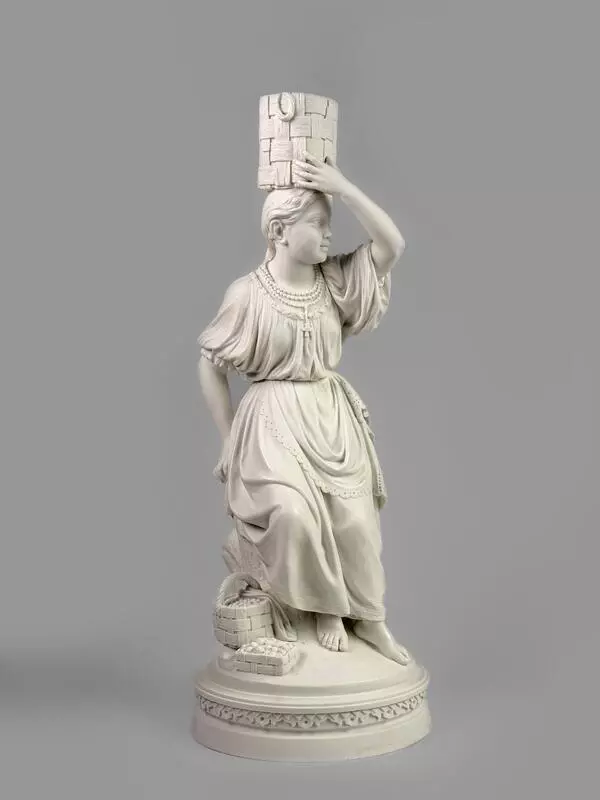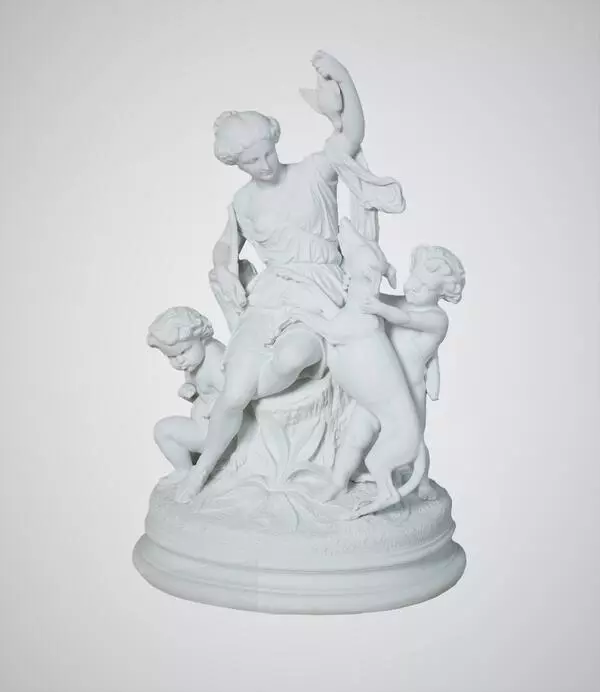The sculptor August Spiess was born in Stralsund, Germany; he studied at the Berlin Academy of Arts. In 1846, a young but already well-known master was invited to Saint Petersburg to take part in the decoration of the Winter Palace and the Hermitage, which suffered from a fire in 1837. During the reign of Emperor Alexander II, Spiess became the chief model master of the Imperial Porcelain Factory. He relied on the achievements and experience of the sculptors of the Meissen Porcelain Manufactory.
Spiess was mainly commissioned by Empress Maria Alexandrovna, wife of Alexander II. The master created new models of figurines in the rococo style specifically for her. The sculptor worked at the factory until 1897.
The Imperial Porcelain Factory was originally called the Neva Porcelain Manufactory. It was founded by Empress Elizabeth. The chemist Dmitry Vinogradov developed the Russian recipe for porcelain, glaze and paints. The manufactory produced small items under his guidance: cups, snuffboxes, buttons. After the construction of a large kiln in 1756, the factory began to manufacture porcelain sets, vases and figurines.
In 1779–1796, the sculpture workshop of the factory was headed by Jacob Rachett. Under his leadership, many famous series of sculptures were created, for example, ‘Peoples of Russia’ and ‘Arabesque Service’. In 1809–1831, all the artistic work at the factory was supervised by the sculptor Stepan Pimenov. During this period, the famous ‘Guryev Service’ and large-sized palace vases were produced.
In the second half of the 19th century, the works of sculptors and artists of the Imperial Porcelain Factory were distinguished by eclecticism. The new creative upsurge of the factory at the beginning of the 20th century was associated with Valentin Serov, Konstantin Somov and other famous artists. This allowed the factory to take one of the first places in the world in terms of the quality of its products.
The porcelain sculpture ‘Children’ displayed in the exhibition was created at the Imperial Porcelain Factory after a sketch by August Spiess. A boy holds a nut in his left hand, a squirrel sits on his shoulder, a bag hangs behind him, and he has a bagpipe on the side. A girl in a pink sundress holds a tambourine. The detailed and painted figurines are made of glazed porcelain. They are expressive, graceful and reflect the features of sentimentalism that were important for that time: striving toward openness and being close to nature.
Experts note that the author of the figurine skillfully modeled complex shapes and created an interesting composition. The sculpture is decorated with fine art painting: colors harmoniously complement each other, and shiny glaze enhances the visual effect.
Spiess was mainly commissioned by Empress Maria Alexandrovna, wife of Alexander II. The master created new models of figurines in the rococo style specifically for her. The sculptor worked at the factory until 1897.
The Imperial Porcelain Factory was originally called the Neva Porcelain Manufactory. It was founded by Empress Elizabeth. The chemist Dmitry Vinogradov developed the Russian recipe for porcelain, glaze and paints. The manufactory produced small items under his guidance: cups, snuffboxes, buttons. After the construction of a large kiln in 1756, the factory began to manufacture porcelain sets, vases and figurines.
In 1779–1796, the sculpture workshop of the factory was headed by Jacob Rachett. Under his leadership, many famous series of sculptures were created, for example, ‘Peoples of Russia’ and ‘Arabesque Service’. In 1809–1831, all the artistic work at the factory was supervised by the sculptor Stepan Pimenov. During this period, the famous ‘Guryev Service’ and large-sized palace vases were produced.
In the second half of the 19th century, the works of sculptors and artists of the Imperial Porcelain Factory were distinguished by eclecticism. The new creative upsurge of the factory at the beginning of the 20th century was associated with Valentin Serov, Konstantin Somov and other famous artists. This allowed the factory to take one of the first places in the world in terms of the quality of its products.
The porcelain sculpture ‘Children’ displayed in the exhibition was created at the Imperial Porcelain Factory after a sketch by August Spiess. A boy holds a nut in his left hand, a squirrel sits on his shoulder, a bag hangs behind him, and he has a bagpipe on the side. A girl in a pink sundress holds a tambourine. The detailed and painted figurines are made of glazed porcelain. They are expressive, graceful and reflect the features of sentimentalism that were important for that time: striving toward openness and being close to nature.
Experts note that the author of the figurine skillfully modeled complex shapes and created an interesting composition. The sculpture is decorated with fine art painting: colors harmoniously complement each other, and shiny glaze enhances the visual effect.





